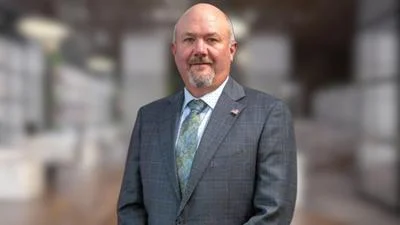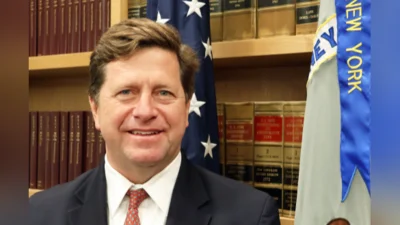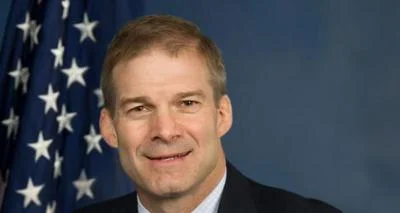The Congressional Record is a unique source of public documentation. It started in 1873, documenting nearly all the major and minor policies being discussed and debated.
“AMERICA'S TRANSPORTATION FUNDING NEEDS EXCEED THE PRESIDENT'S BUDGET PROPOSALS” mentioning the U.S. Dept. of Transportation was published in the House of Representatives section on pages H705-H706 on March 3, 1997.
The publication is reproduced in full below:
AMERICA'S TRANSPORTATION FUNDING NEEDS EXCEED THE PRESIDENT'S BUDGET
PROPOSALS
The SPEAKER pro tempore. Under the Speaker's announced policy of January 7, 1997, the gentleman from Virginia [Mr. Wolf] is recognized for 60 minutes as the designee of the majority leader.
Mr. WOLF. Mr. Speaker, last week the House Subcommittee on Transportation of the Committee on Appropriations and Related Agencies kicked off its hearings on the fiscal year 1998 transportation appropriation legislation.
For 2 days the subcommittee received testimony from Members of Congress and public witnesses on transportation policy and funding, including issues related to public transportation. Many, many witnesses representing mass transit organizations and properties located across the country stressed the urgent mass transit needs now existing, the greater needs projected for the future, and the need for additional spending for public transportation.
Earlier last month the President presented his fiscal year 1998 budget proposals, and the budget request for public transportation falls far short of the needs articulated by the witnesses who testified last week. In fact, the Clinton budget proposes to hold the line on public transportation funding at current spending levels, calling for a reduction of 1 percent from last year's level.
Clearly the transportation community is at an important crossroads. Identified mass transit needs far outstrip the President's budget proposals. Under even the rosiest of economic projections, and 602(b) allocations, Congress will never, never be able to fund all of these transit needs.
Further complicating this situation is the upcoming expiration of ISTEA. As Members know, the Intermodal Surface Transportation Efficiency Act of 1991, known as ISTEA, expires at the end of fiscal year 1997. Already, in fact, beginning last year, States and their Governors and transportation departments, Amtrak and commuter rail users, environmentalists and bicyclists, highway folks and the transit community, are staking their positions on legislation to succeed ISTEA.
{time} 1415
It seems that everyone is an interested party in this discussion and every interest is in competition with each other. Are you interested in protecting the status quo, changing formulas, seeking major program reforms or otherwise merely looking to increase your relative take of this massive $150 billion authorization bill? There is a place for you in the debate.
I understand there is a tongue in cheek expression making its way around the Capitol these days. That is that the reauthorization bill reported by the House Committee on Transportation and Infrastructure will be named ``Hot-Tea'' for Highway Only Transportation Efficiency Act, the implication being that the general authorization for the transit programs and many of the flexible funding provisions included within ISTEA that benefit the transit community will either be eliminated or greatly diminished while authorization for concrete and pavement will increase dramatically.
I certainly support, strongly support highway spending and providing funding for concrete and pavement to build these necessary roads. However, highway programs must continue to be only one component of a balanced transportation program, one that meets the needs of highway users as well as those who depend on public transportation.
To ensure balance in our comprehensive transportation program, we need to pull together to improve the current program structure and the delivery of services to those that use public transportation regularly. Public transportation is not just about using a sleek subway system when visiting the Nation's capital, nor is it simply about riding in San Francisco's famed street cars while vacationing on the West Coast, nor is it just about getting an earmark for a favored project back home, no matter how small the earmark may be, to ensure that one more transit project is listed in the appropriations legislation and thereby legitimized for continued funding through the lifetime of the project.
No, public transportation is also about, really it is primarily about, getting people to work, getting children to school, providing the way for people to get to the hospital, to the store, to visit friends and relatives across town and across the country. Public transportation represents a vital transportation link for many people, including millions of Americans with disabilities. And without public transportation, many people would virtually be stranded, unable to venture beyond the confines of their neighborhoods. Simply stated, we need to change the way we view providing for public transportation.
First, what are we spending on public transportation? Second, where is that money going? Third, are those funding decisions consistent and appropriate given budgetary constraints? Last, can we develop a comprehensive coherent public transportation program? This is our challenge and this is our goal.
Do you know that annually the Federal Government spends over $4 billion on transit programs alone? These funds are provided to modernize older rail systems, to purchase and rehabilitate buses and rail cars, and to build or improve existing bus facilities, rail yards, stations and heavy and light rail systems in many of our Nation's cities.
Where is that money actually going? Each year the transportation appropriations bill provides funds designated specifically for transit properties across the country. Last year Congress provided $4.4 billion for transit, of which over $800 million was provided for construction and design of some 54 transit projects, called new starts, throughout the country, and Puerto Rico.
Are these funding decisions appropriate? The Federal Transit Administration currently has entered into 13 full funding grant agreements and expects to enter into two more very soon. These full funding grant agreements represent a commitment by the Federal Government to fund these transit new start projects through to their completion. The 13 funding grant agreements now in place represent a total of $5.4 billion in Federal commitments, of which nearly $3 billion remains to be funded. The FTA will have to maintain a grant portfolio of roughly $800 million per year through the year 2001 to fund these projects; $800 million per year for these projects alone, yet the President's budget for fiscal year 1998 requests only $634 million for all new start projects, nearly $170 million below the amounts negotiated by FTA for the full funding grant agreements.
What does this mean? It means that FTA is further increasing the outyear commitments in its already limited portfolio and will increase the project costs as well. Is this our total commitment to public transportation and new starts? Not by a long shot. As I mentioned earlier, the fiscal year 1997 act provides new start funding for 54 projects. Obviously that is far more than the number of projects having full funding grant agreements. In short, we are providing funds for projects above and beyond those that have secured full funding grant agreements.
The FTA also plans to enter into two additional full funding grant agreements this fiscal year. These agreements would add significantly to out-year commitments. It does not end here either. According to the FTA, there are currently 53 major investment studies now underway throughout the country that may lead to requests for new starts funding. These studies are examining a number of transportation alternatives and corridor alignments.
Many of these studies are in their early stages but to date of the 53 major investment studies that have produced capital cost estimates, the total capital cost of these fixed guideway alternatives exceeds $30 billion.
These figures are alarming. The new start program is increasingly oversubscribed and overcommitted. The cost of completing all projects in the development process at any one time vastly exceeds the amount of Federal funds that are available now and in the foreseeable future. Another interesting fact worth noting is that since fiscal year 1992, California has received nearly a quarter of all the funds in the new start program, more than any other State. In fact, the top three recipient States, California, New Jersey and Oregon today received more than half of the funds in the program during that period.
In fiscal year 1998, the President's budget for new starts looks much the same. Of the $634 million proposed for the program, California is to receive almost one-third of the total funding. New Jersey would get 13 percent and Oregon would get 10 percent. Again, in fiscal year 1998, these three States account for more than half of the total amount requested of the new start program.
For those of you considering light and heavy rail projects in your areas any time in the near future, let me just say this, under the current system, there are no funds available.
In addition, one has to wonder whether some transit capital grants are being spent wisely today. The Congressional Budget Office looked at the cost effectiveness of various forms of public transportation assistance. Using Department of Transportation data to compute the total annualized cost per passenger-mile of these different forms of transit, CBO concluded that ordinary buses average 35 cents per passenger-mile; commuter rail averaged 65 cents per passenger-mile; heavy rail at $1.40 per passenger-mile; and light rail at $3.40 per passenger-mile, nearly a tenfold increase over buses. Yet what kind of transit have cities and other local governments been rushing to build with their Federal grants?
Light rail
Some transit advocates claim that only light rail can attract suburban commuters and stop the declining use of transit by the middle class. But almost every city that has built either light or heavy rail in the past 25 years has a smaller share of commuting by transit in 1990 than they did 10 years earlier.
This is true in Portland, San Francisco and even here in Washington, DC. In fact, the only major city that has witnessed growth in mass transit's share over the last decade has been Houston, TX, and they are building busways in Houston, not a rail system.
This brings me to my final point, which is really a call to action. What do we need to do? What can we do to develop a comprehensive coherent public transportation program which responsibly meets critical public transportation needs in a manner consistent with the reality of constrained resources? I do not claim to have the answer. But I do know this. The Federal Government is already overcommitted on transit spending, while new requests for funding, many of which would certainly meet identified needs, pour in, when large increases in spending for public transportation are not likely and when important programmatic changes are anticipated during reauthorization of ISTEA.
Those of us who care about support of public transportation must be able to offer alternatives to the current methods of doing public transportation business. I challenge my colleagues to talk with transit managers, urban planners, as well as State and local officials to consider a number of questions, including the following:
First, does the current new starts program structure encourage metropolitan areas to build fixed-guideway systems rather than an alternative that may be more appropriate but less likely to obtain Federal funding.
Second, does the current system of providing Federal funds specifically for fixed-guideway, new start systems induce metropolitan areas to pursue more costly, less flexible systems compared to flexible route transit systems, such as buses, which can use rights-of-way that are shared by other vehicles?
Third, should the current program be changed to provide more flexibility to State and local government and transit authorities to enable them to be more responsive to the needs of their particular communities?
Fourth, does the current funding formula, 80 Federal/20 local match, have the effect of gold plating projects or providing incentive to pursue projects that transit districts and municipalities otherwise would not because of local financial limitations.
Fifth, should we continue to fund projects in the very early stages of engineering and major investment studies, the cost of which can and perhaps should be paid from State and local funds to indicate strong local support, or limit appropriations to only those projects in their final design and construction?
Sixth, should the current program be modified to provide priority funding or other preferences to projects supported by a greater local match?
Seventh, should transit capital assistance be allocated to the States and localities in a way that mirrors Federal aid highway assistance to guarantee States a minimum return on the taxes they send to Washington?
Eighth, what level of Federal funding should be made available for public transportation, and what should the source of this funding be?
One thing is certain, public transportation is an integral part of the Nation's transportation network and a vital life link for many segments of our population. As such, there must be a continuing, strong Federal role in transit. Local transit systems are the beginning and ending point for inner city transportation and are therefore very much a part of our national transportation network. And road users should help pay for transit programs in some circumstances since they benefit from them. As public transportation reduces the number of automobiles on the road, it therefore reduces congestion on roads and bridges.
Beyond this, however, our transit programs and policies must be updated. Budgetary constraints coupled with ISTEA reauthorizations demand that we develop new ways of dealing with public transportation. It is time to think differently, to be more innovative, creative and more efficient in the transit services we provide and the alternatives we present to our local boards, States, Federal Government and Congress.
____________________








